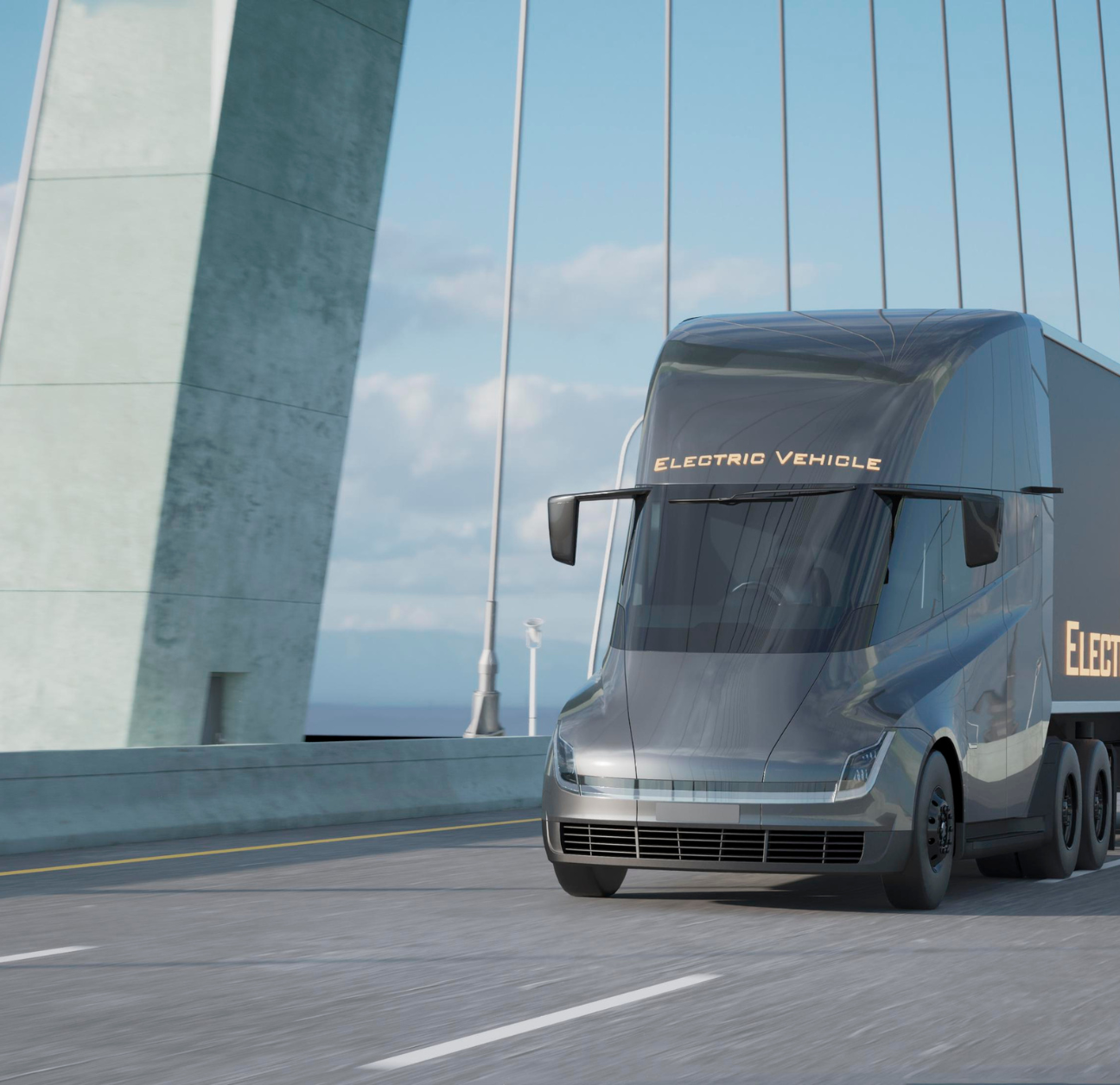Seamlessly integrate your TMS, ERP or any other platform in your ecosystem with your customers, partners, or software vendors, so you can offer CO2 data and stay ahead of SEC regulations.
Green Supply Chain
In a society that is becoming increasingly eco-conscious, green supply chains are becoming the way of the future. Green supply chains prioritize sustainability practices when sourcing materials and logistics processes. However, environment-focused supply chain management principles don’t only include environmentally conscious factors - a truly green and sustainable supply chain fully integrates environmental and ethical practices into its supply chain management strategies. Managers of green supply chains also take their immediate environment into consideration, such as the neighborhood where their plants are located or where their employees live, in addition to their global environment and impact as a whole.
So what is green supply chain management, exactly? Green supply chain management is when sustainable practices are built into traditional supply chain management processes, from manufacturing to operations to end-of-life management. The principle of 41D - reduce, reuse, recycle, reclaim, and degradable, is one of the building blocks of sustainable or green supply chain management. The objectives of green supply chain management are similar to the objectives of traditional supply chain management but with several important additions. The overall goals of supply chain management are to improve efficiency, optimize transportation and logistics efforts, reduce costs, increase customer satisfaction, and increase revenue. Important components of green supply chain management specifically include the goal of eliminating or significantly reducing waste and being conscious of the socio-economic impact of a business’s supply chain practices.
Drivers of green supply chain management include the reality that COVID-19 has impacted the supply chain process permanently, as well as customer demand for more sustainable business practices from companies. The MIT Sloan School of Management conducted a survey that found that customers surveyed reported being willing to pay more for companies that ensure green supply chain management and transparent processes. While one might think these are simple fixes, green supply chain management often means that companies need the ability to have real-time access to third-party partners of logistics and the ability to have crystal clear supply chain visibility.
Green Supply Chain Examples
Green logistics and transportation practices can significantly impact customer satisfaction, company reputation, and more. Green supply chain processes don’t tend to pop up overnight. Instead, they result from careful planning and an intentional shift from companies to create more environmentally-conscious practices. Additionally, supply chains don’t tend to transition from traditional to totally green all at once. Green supply chains can be created slowly over time using action plans to fully transition to a green supply chain by a certain period.
Some examples of green supply chain management might be switching delivery fleets from gas or diesel to electric, implementing circular supply chain practices, and creating supply chain transparency with logistics API integrations to CO2 data providers. While there are many innovative ways to adapt the supply chain, those are only a few green supply chain examples. Amazon, one of the biggest contributors to the ‘2-day delivery’ supply chain crisis known as the Amazon Effect, has crafted a Climate Pledge that includes transitioning its fleet to electric vehicles. These vehicles can travel up to 150 miles on a single charge and are built by Rivian. Amazon purchased 100,000 of these electric vehicles, and many can already be seen in cities like Los Angeles.
One of the more futuristic green supply chain management examples is drone delivery. While it seems far-fetched, Amazon and Wing are both developing drones that can be used for delivery. Drone delivery is reported to be able to cut emissions from transportation by half. Drones can also be used to deliver to remote areas, bypassing cities, bodies of water, and mountains. Drone delivery could be the most effective way to deliver small packages that must remain temperature controlled in the fastest way possible, such as vaccines.
Green logistics in supply chain management can be implemented using technology. For a sustainable logistics example, using blockchain technology enables transparency and visibility in the supply chain, so that logistics organizations interested in partnering with other supply chain members can know for certain that it uses sustainable practices. The blockchain entries can not be deleted or altered, providing unparalleled transparency.
Green Supply Chain Trends
Many green supply chain trends are occurring in transportation. One of the trends in sustainable procurement at the moment is minimizing air freight. Shipping by air outputs a large number of carbon emissions, and while it’s a quick method of shipment, it is not energy efficient.
In the same vein, another trend is increased investment in transportation infrastructure. Green transportation in the supply chain is vital. Some may remember the Ever Given, a container ship run aground in the Suez Canal for six days in 2021, one of the last decade's most famous supply chain mishaps. Ryan Hopcraft, a researcher at Plymouth University’s maritime cyber threat research group, stated that “half the world’s ports can’t even deal with ships this size.” Investing more into the infrastructure of such ports may help prevent such a disaster from happening again in the future. And with many companies transitioning to electric fleets, more charging stations will need to build across the nation.
Another trend that also goes hand in hand with energy green supply chain technologies is carbon monitoring. As the Securities and Exchange Commission establishes rules for reporting on Scope 1, 2, and 3 emissions, its more important than ever for forwarders to offer clear carbon data to their customers.
Green Supply Chain Companies
Many companies are already transitioning to sustainable supply chain practices, becoming some of the best-known green supply chain companies. At Nike, green supply chain practices look like shifting from a national distribution center to more regional service centers. Additionally, Nike made use of a dedicated rail system from Los Angeles to Memphis that it calls a “sole train.” This rail link enables the use of regional service centers without cutting down on efficiency. Nike’s regional distribution centers also make use of more than 1000 collaborative robots, also known as “cobots.” These cobots assist human employees in sorting, packing, and moving products, creating efficiency and decreasing the physical strain of working in a warehouse.
Many of the top sustainable supply chain companies are also transitioning to regional distribution centers and investing in robotics, AI, and digitization to better understand their carbon footprint supply chain.
At Toyota, green supply chain practices have been at the forefront of their strategy for quite some time. They were named one of 25 Green Supply Chain Partners by Inbound Logistics in 2012. They were recognized for their sustainable manufacturing practices and portfolio of fuel-efficient industrial equipment machine products. Since then, Toyota has continued to build on its sustainable promises, pushing for net-positive impacts from its operations.
Sustainable Supply Chains: Key Challenges
There is a lot to consider for enterprise companies and small businesses when they are evaluating sustainable supply chains: key challenges and opportunities for growth are likely at the top of their minds. The impact of green supply chain management is vast and can be felt at an organization-wide level. Refiguring the supply chain processes means a large change in many ways. However, there are significant advantages to transitioning to a green supply chain. It is not without its challenges, but in the coming future, many companies will likely make the switch.
One of the biggest challenges that are often seen as one of the disadvantages of green supply chain management is the upfront cost. Even though green supply chain management is meant to provide returns over time, it can be costly to many organizations to initially transition to green supply practices for many reasons - new specialized equipment may need to be purchased, new locations may need to open, etc. However, transitioning to green supply chain practices may actually save an organization money in the long run. Another disadvantage of green supply chain management is that it can be difficult to monitor complex supply chains or the additional processes necessary to become sustainable. However, this can be combatted with software tools that are built to increase supply chain visibility and connect supply chain partners.
While there are advantages and disadvantages of green supply chain management, sustainable practices may better prepare companies for the future.
Green Supply Chain Management Importance
Green supply chain management is a trending topic in the supply chain industry because of the growing demand from consumers that organizations take more responsibility for their environmental and socio-economic impact. Green supply chain management's importance will only continue to grow as we move into the future and more studies are revealed about the environment and the role that carbon emissions plan in it.
Although there are some initial hurdles to developing green logistics practices and establishing better connectivity between new reporting systems, Chain.io was founded to help companies navigate these challenges and create strong, sustainable supply chains.
Chain.io recognizes the importance of green logistics and integrated CO2 supply chain data and gives businesses the ability to connect directly with partners to increase revenue, cut costs, and increase supply chain visibility. The integrations created by Chain.io can connect to any system, from the newest software to the software of the 1980s. These types of integrations can remove many of the barriers to green supply chain practices, increasing visibility, improving connections, and making it easier for companies to go green.
One of the benefits of green supply chain management that many organizations are after when they begin implementing green logistics benefits is reduced environmental impact, which can also result in improved customer relationships. Green supply chain practices can also buffer against disruptions due to a circular nature or the practices of reusing and recycling. Green supply chain management practices can also open organizations up to the opportunity for new partnerships with other companies that are also dedicated to going green.
Chain.io is one of the facilitators of those relationships as they build integrations to help two unrelated systems communicate with each other and let supply chain leaders know when a connection is needed. Green supply chain practices can also lead to increased revenue or a stronger cash flow overall. While sustainable supply chain practices might be costly to implement upfront, they are supposed to provide greater returns and reduced costs overall as time progresses. This is because more materials are being reused and recycled, resulting in less new material acquisition.







